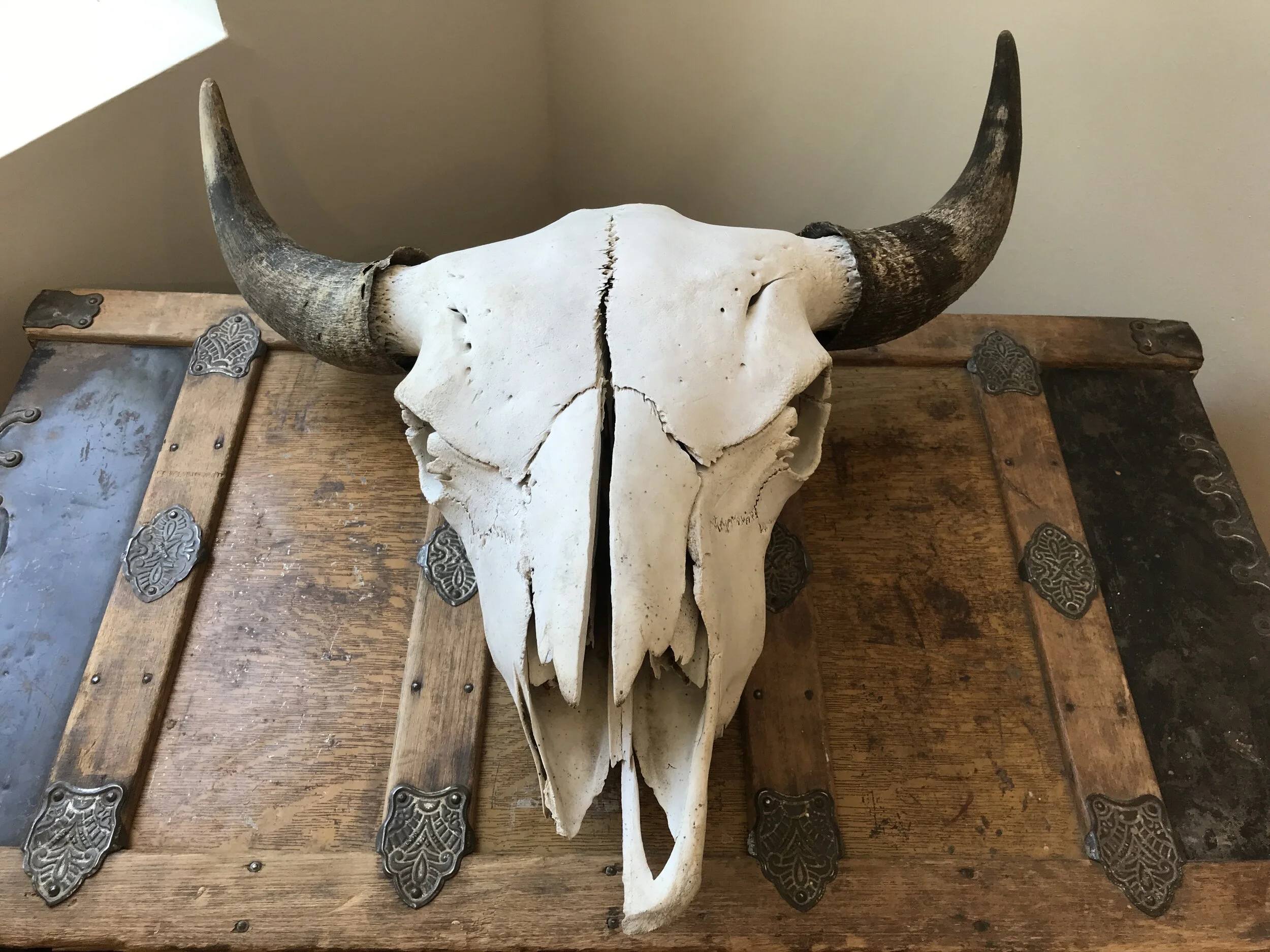Examining an artifact retrospectively is key to historical research. This means not only examining an object through a modern, 21st Century lens but through the context of its own time. This historical context might include social, religious, political, environmental and economic factors of the past, and requires that we consider perspectives and experiences outside of our own. As a historian, I must investigate objects and events without personal value judgements shaped by modern understandings and ethics. And the story of the American Buffalo is a prime example of the need for contextual consideration.
On display in our Robert Nail, Jr. Archive gallery is a sizable skull of an American Buffalo from the Sallie Reynolds Matthews collection. At the turn of the 19th Century, the American Buffalo roamed freely in our region. These animals had been hunted sustainably for hundreds of years by the Native Americans for their meat and hides, with nearly every part of the body being utilized.
When early white settlers arrived and began to build ranches and farms in West Texas, these free-range buffalo were initially considered a novelty and hunted for food in a manner similar to the Native Americans. However, they were soon viewed as a ‘nuisance’ to be eliminated. The animals proved to be destructive to the new settlements, tearing down fences, destroying entire crops, and wreaking havoc on buildings. Soon, buffalo were being killed indiscriminately as destructive ‘varmints.’ Quickly, buffalo hunters were cashing in on the money to be made in buffalo hides and bones...sometimes killing thousands in one hunt! Entrepreneurs took advantage of this economic opportunity and offered guided buffalo hunts for sportsmen- even using the railroad to carry them right into the middle of a herd and allowing their customers to shoot a buffalo without leaving the train car!
Up until 1800, there had been many as 60 million buffalo in the United States. Due to examples of blatant slaughter such as listed above, the buffalo were decimated and numbered only around 300 by 1900! After thriving for hundreds of years, an entire species was nearly made extinct in a few decades.
In retrospect over a century later, these actions may seem extreme and difficult to understand or accept. To fully understand the object in our gallery and it’s story however, I must consider the following context:
We must remember that destruction of homes and crops could drastically affect the success and livelihood of settler families. Building resources were scarce, and many relied on agriculture for both food and income. These settlers could not ‘afford’ to co-exist in the same space with an animal who threatened this agriculture.
It is also necessary to understand that these early settlers incorrectly reasoned that as there were seemingly innumerable numbers of the animal, it ‘did not matter’ how many they disposed of. They did not understand the animal to be a non-renewable resource (or even view it as a necessary one). In addition, most would not have understood the environmental effects of species removal and extinction.
Lastly, it is important to consider a 19th century social perspective that celebrated the Opportunist. This Manifest Destiny-Era encouraged and rewarded those who boldly sought opportunities to build, create and expand at the expense of any available resource. Their actions were not believed to be irresponsible or unethical by most in their time.
Today we understand that wildlife and their habitats are not limitless or superfluous. We understand the dangers of its loss and continue to navigate a journey of shared space. Today, our Parks and Wildlife Departments employ game wardens, park rangers, and biologists to oversee and protect our wildlife and their habitats.
When I give tours of the SRM gallery and stop at this Buffalo Skull, complex conversations can arise ..often stemming from our modern perspective. It is easy to criticize the actions and choices made in a time that we did not experience. is simple to dislike and dismiss an object that reminds us of something uncomfortable from the past. But I remind visitors that a discussion of context is not only the way to fully appreciate the artifact, but the way to understand the history that informed it and advocate for informed actions and choices for the future!
Jewellee Kuenslter
THCP Coordinator

